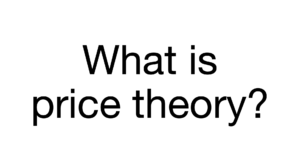Monopolistic Competition is one in which there are large number of firms producing similar but not identical products.
What is Monopoly?
Monopoly is a market condition where there is only one supplier or producer of a homogenous product for which there is no close substitute but has many buyers.
Under the monopoly , a firm is a price setter i.e. it can fix any price but here also the pricing is done taking elasticity of demand for the product into consideration.
That means though the seller/ producer can fix any price but it will go for the price where demand and consequent profit will be maximum.
What is monopolistic competition?
Monopolistic Competition is one in which there are large number of firms producing similar but not identical products.
Since there is limit to the growth of competitors the excess profits earned by monopolistic situation attracts new competition.
This will have long run effect on the excess profits which will tend to diminish because of the price competition with close substitutes. The company however, have to compare marginal cost and marginal revenue in maximizing its profits.
Under this condition , consumers may buy more at a lower price than at higher price. The profit can be maximized by equating marginal revenue with marginal cost.
Characteristics of monopolistic competition
This competition have many features and qualities that differentiate from the market. Following are the characteristics of monopolistic competition.
1. Free entry and exit from market
Free entry from market means a business can start selling goods or services and experience obstacle of entry. Whereas free exit means company can leave from market freely if it experience losses.
2. A slightly different goods and services
Monopolistic Competition is one in which there are large number of firms producing similar but not identical products i.e. slightly different. The differences may be artificial or physical depends on needs of company.
3. Imperfect consumer knowledge
Consumer observe information such as quality and pricing to make purchase decision. Consumers rarely have full information about every product they purchase, and companies use this to create a perception of difference through advertising and marketing.
4.Non-price competition
In a monopolistically competitive market, firms are often in fierce competition with other firms offering a similar product or service. And therefore try to compete on bases other than price for example: they indulge in aggressive advertising, product development, better distribution arrangements, efficient after-sales service and so on.
5. Large number of seller
In a monopolistically competitive market, there are large number of independent firms who individually have a small share in the market.
You can refer:https://taxandfinanceguide.com/perfect-competition/



[…] Refer:https://taxandfinanceguide.com/perfect-competition/ and https://taxandfinanceguide.com/monopolistic-competition/ […]